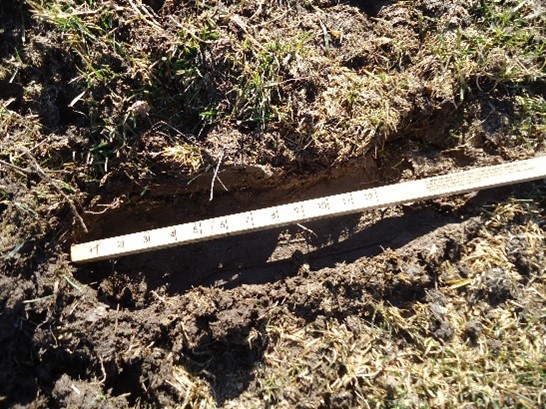Minimize hoofprint damage in springtime horse pastures
Horses can damage pastures in times of inclement weather, especially when soils are waterlogged.

After a long winter of hay, horses are eager to graze. Horse caretakers are also ready for horses to be turned out on pasture. Managing horse pastures in springtime can be challenging. It is well documented that early spring pastures are lush in nutrients including sugars which may put some horses at risk of developing laminitis. Pasture-induced laminitis can occur when horses are abruptly switched from winter hay to spring pasture. Introducing horses to spring pasture slowly over 6 weeks and feeding them hay before turnout will help horses adjust to fresh grass.
In addition to health considerations, horses can severely damage pastures by entrenched hoofprints on waterlogged soil. Horses turned out for the first time in the spring may go bucking, kicking, and running full speed across the pasture. While this can be quite entertaining, significant damage may be caused to your forage stand if the ground is wet.

Hoofprint damage can reduce pasture yields by:
- Destroying, burying, or damaging leaf shoots of pasture plants.
- Compacting soil in the root zone – smearing and compression destroys the soil structure and pore space which limits the ability of plant roots to grow down through the soil profile.
- Bare ground provides opportunistic weeds a place to start.
- Damaged soil surfaces can be rough, creating an undesirable surface to walk and/or drive across.
Michigan State University Extension offers the following management consideration to minimize hoof print damage to your horse pastures.
- Utilize a sacrifice/exercise lot to protect pastures during inclement weather and/or conditions.
- Exercise horses before turning them out on pasture for the first time after a long winter, allowing them to release some energy.
- Allow forage to reach several inches (8 inches plus) in height to prevent damage to delicate early growth and dry soil to provide a solid footing.
In the end, patience may be needed when trying to decide when the right time is to turn horses out on pasture. It can be a balancing act when attempting to manage pastures and the health considerations of your horse. In some cases, it comes down to the available resources allocated for a desirable grazing area, and what your specific goals may be for your land base and horse.
Check out the following resources for more information on managing horses on spring pastures:



 Print
Print Email
Email

